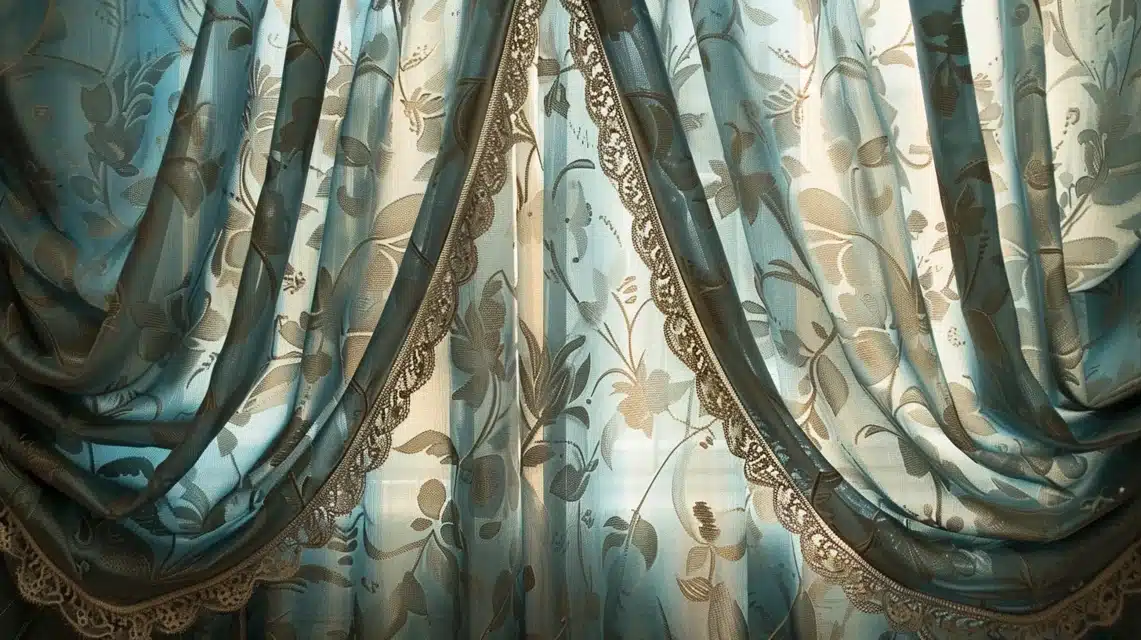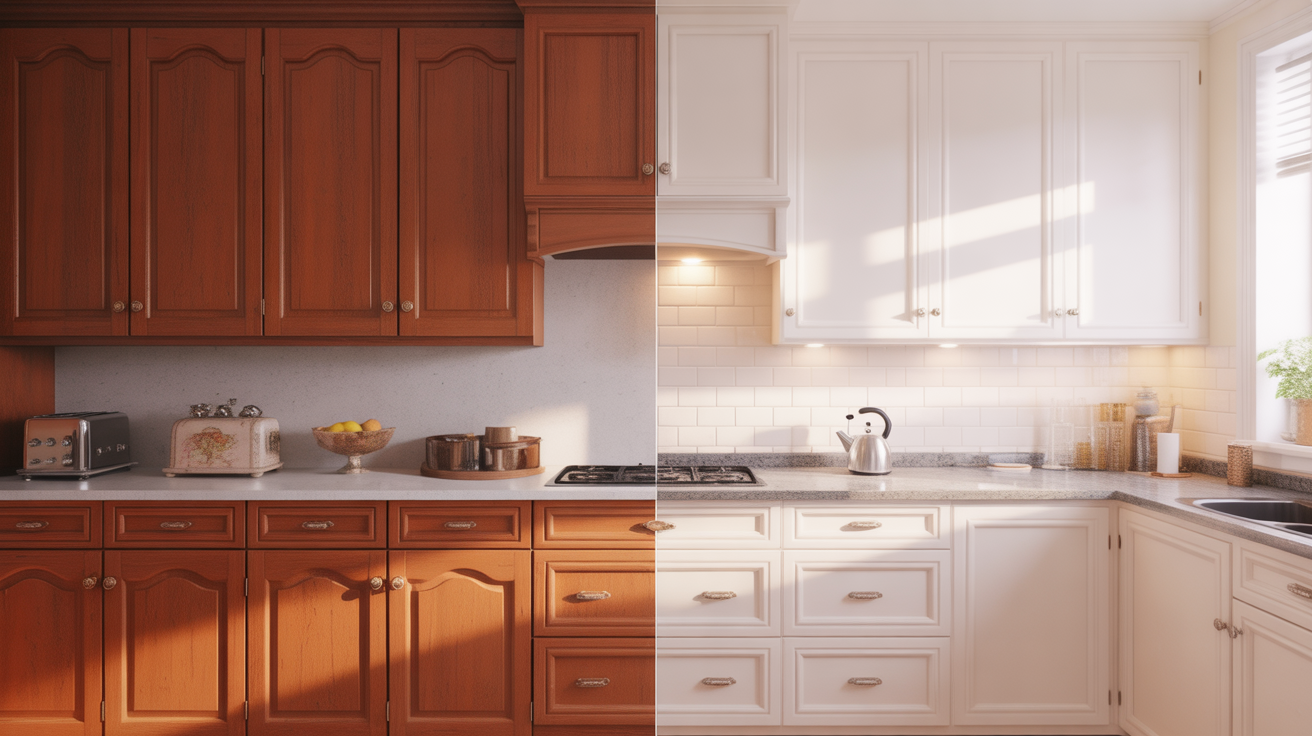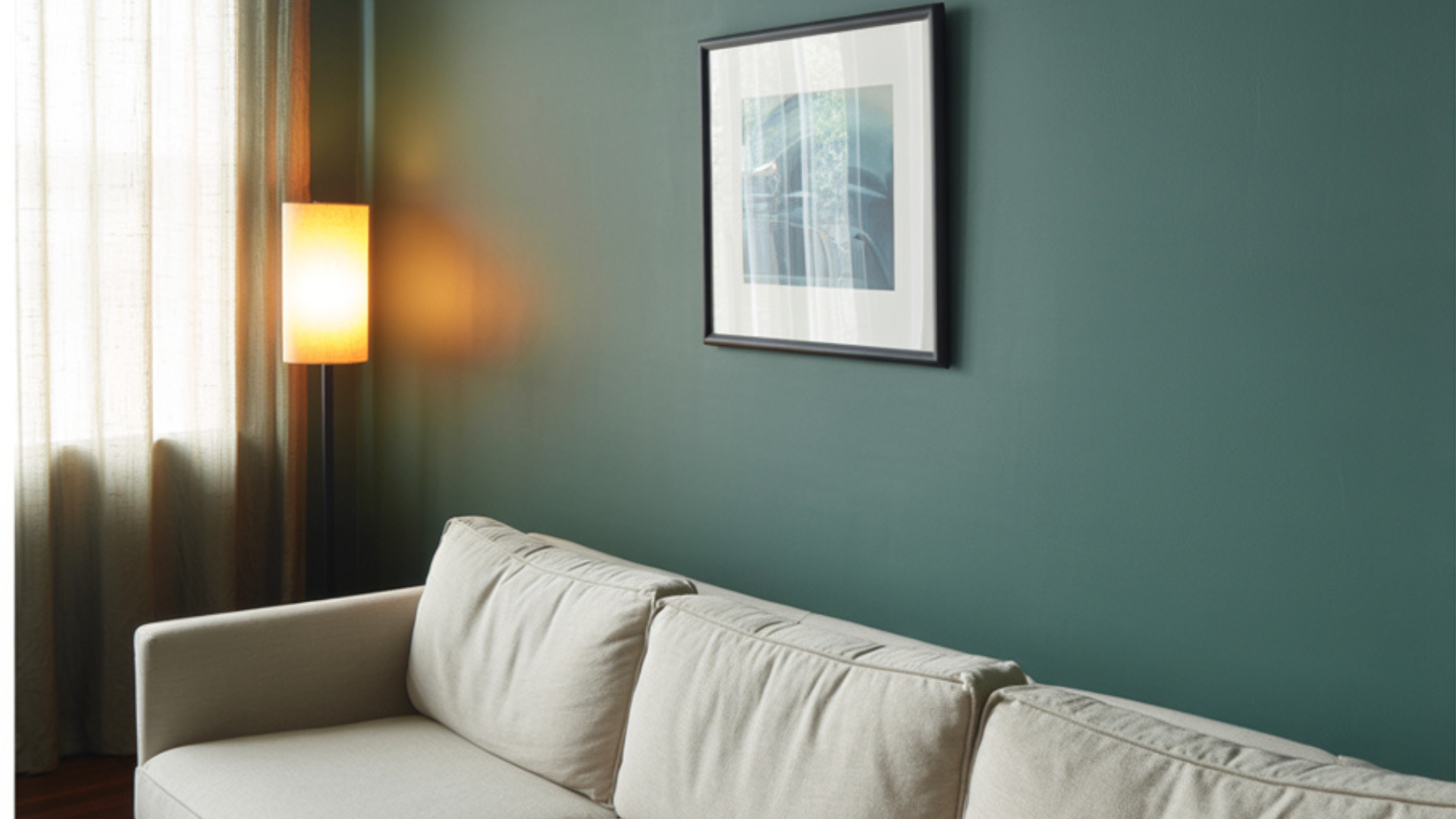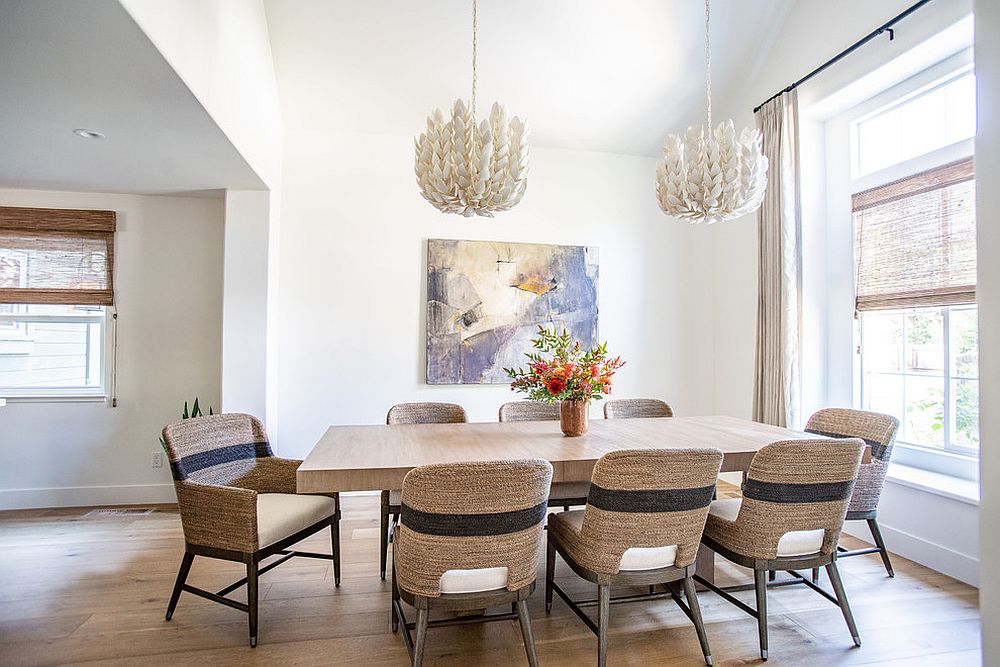How to Properly Train Curtains for a Perfect Look?
Hey there! Are you also troubled by messy curtains and want to know how to train curtains?
As someone who had just bought their first home, I spent weeks staring at my messy curtains, wondering why they wouldn’t hang right.
After countless YouTube videos and help from my mom (thanks, Mom!), I finally learned how to make them look perfectly styled.
No more wonky folds or strange bumps! I’m here to share everything I’ve figured out about training curtains to hang beautifully.
Whether you’re dealing with light sheers or heavy panels, these tips will help you get that put-together look you’re after.
Step-by-Step Guide to Training Your Drapes
Step 1: Gather Materials
- Get a soft ribbon or yarn that you can wrap around the drapes.
- Optional: A bobby pin to hold any stubborn pleats in place.
Step 2: Align Folds and Pleats
- Ensure that the folds in your drapes align with any pleats or grommet panels at the top of the curtain.
- Fold the fabric into an accordion shape so that it sits neatly.
Step 3: Secure Folds with Ribbon or Yarn
- Wrap the ribbon or yarn loosely around the folds in three places: at the top, middle, and bottom of the drapes.
- This keeps the folds together and helps them “train” into place.
Step 4: Use a Bobby Pin for Stubborn Folds
- If any folds do not stay aligned, use a bobby pin on the back side of the drape to hold it in place.
- This way, the crease will stay in the back and not interfere with the front appearance.
Step 5: Set the Training Time
- Leave the drapes tied for 2 to 3 weeks to allow them to set fully in place.
- If this duration is not possible, keep them tied for at least 24 to 48 hours.
Step 6: Remove Ribbon and Pins
- After the training period, carefully remove the ribbon and any pins. Your drapes should now hang perfectly.
Troubleshooting Common Issues with Curtains
1. Curtains Flaring at the Bottom
Cause: This often happens if the fabric is too stiff or if the curtains were not “trained” properly when initially hung.
Solution:
- Weight the Bottom: Sew small weights into the bottom hem of the curtain to help it hang straight.
- Re-Train the Curtains: Fold the curtains in an accordion style and loosely tie them at intervals, leaving them tied for a few days to encourage the fabric to hold its shape.
- Fabric Adjustment: If fabric stiffness is causing the flare, consider steaming to soften it or opt for fabric with more flow for future purchases.
2. Uneven Pleats or Folds
Cause: Uneven pleats or folds can result from improper hanging or misalignment when arranging the curtains.
Solution:
- Align Folds Carefully: Make sure the pleats align evenly from top to bottom before securing. Manually adjust each pleat or fold so they are parallel.
- Use Clips or Pins: Attach pins or clips to the back of stubborn pleats to keep them aligned while being trained.
- Re-hang If Necessary: Sometimes, re-hanging the curtains can help. Gently adjust the folds after rehanging to ensure even alignment.
3. Persistent Wrinkles
Cause: Wrinkles can persist due to fabric type, prolonged folding, or improper storage before hanging.
Solution:
- Deep Steam Treatment: Use a fabric steamer to work out wrinkles. Steam the curtains from both sides, paying extra attention to the middle and bottom sections for stubborn wrinkles.
- Ironing: For fabrics that can withstand heat, use an iron on a low setting, pressing gently while the curtains hang to avoid new creases.
- Choose Wrinkle-Resistant Fabrics: In the future, consider wrinkle-resistant or blended fabrics for low-maintenance upkeep.
Tips for Different Curtain Types and Fabrics
1. Sheer Curtains

- Gentle Washing: To avoid damage, hand wash or use a gentle cycle on the washing machine with a mild detergent.
- Drying Method: Air-dry sheer curtains to prevent shrinkage or warping. Hanging them while slightly damp can help reduce wrinkles.
- Hanging and Training: To avoid damaging the fabric, use lightweight, non-marking clips or pins when training sheer curtains. Tie them loosely to maintain shape without creasing.
- Sun Exposure: Be mindful of prolonged direct sunlight exposure, as sheer fabrics can fade or weaken over time. If sun exposure is a concern, consider using a lining.
2. Heavy or Thick Fabrics Curtains

- Strong Rods and Brackets: Ensure that your curtain rods and brackets are sturdy and can support the weight of the fabric without sagging.
- Reinforced Seams: For very heavy curtains, reinforced seams along the top edge can provide extra support and prevent tearing.
- Weights for Stability: Sew curtain weights into the bottom hem to help the fabric hang evenly and avoid flaring.
- Training Techniques: Use wide, durable ribbons or fabric ties to train the folds. Leave them tied for a longer period (up to a month) to ensure they stay in place.
3. Patterned or Textured Curtains

- Precision Hanging: When installing patterned curtains, ensure the pattern aligns seamlessly across multiple panels for a cohesive look. Measure and adjust to prevent mismatched designs.
- Centering the Pattern: For a more polished appearance, center the main design element in the middle of each panel, especially for bold or large-scale patterns.
- Training with Care: When training folds, remember that creasing doesn’t distort the pattern. Use fabric-friendly clips on the back to keep alignment while keeping the pattern visible and uninterrupted.
- Enhancing Texture: Avoid heavy steaming or ironing for textured curtains, as it may flatten the fabric’s design. Light steaming from a distance is ideal to maintain the textured effect.
Summing Up
That’s all there is to it! After following these steps, my curtains look much better than when I first hung them.
Here’s one last tip I picked up: I keep a small spray bottle with a mix of water and fabric softener nearby.
When I notice any stubborn creases forming, I lightly mist the area and smooth it with my hands.
This quick fix works wonders between deep cleanings and helps maintain that fresh look.
Remember, well-trained curtains make your windows look better and make your entire room feel more complete and pulled together.
Frequently Asked Questions
Can I Train Curtains without a Steamer?
You can train curtains by carefully arranging the folds by hand, securing them with clips or ties, and leaving them in place for a few days.
Is Curtain Training Necessary for All Curtain Types?
Curtain training is helpful for heavy fabrics or pleated styles; lighter curtains may naturally fall into place without formal training.
What if My Curtains are Still Not Hanging Properly After Training?
If training doesn’t work, try re-positioning folds, using weights, or lightly ironing (if fabric allows) to encourage a more defined drape.







